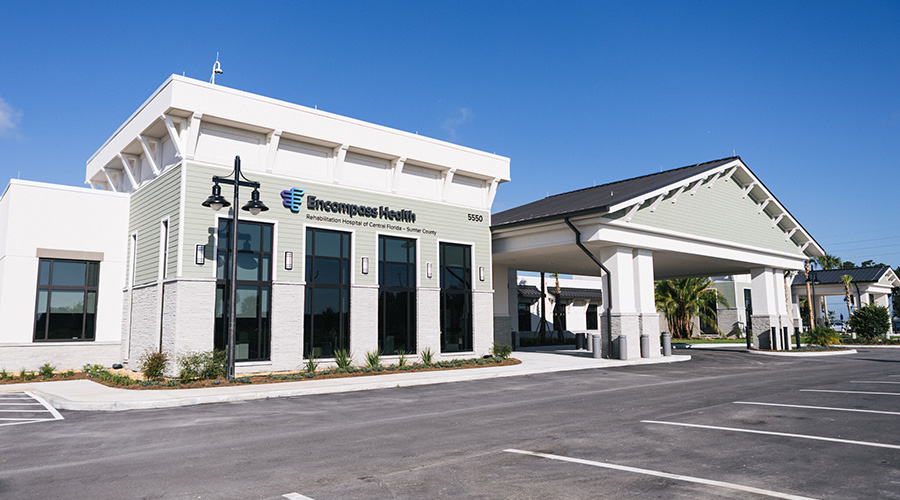Recent statistics point to the rising rate of workplace violence in healthcare facilities. A staggering 40 percent of healthcare workers experienced an incident of workplace violence within the past two years, according to data from a recent survey. Many of these violent incidents occurred while workers provided an update on a patient’s condition to the patient or their family or while explaining or enforcing an organizational policy.
These examples generally fall within healthcare employees’ daily responsibilities, and organizations must take action to ensure the safety and well-being of staff. While maintaining a security presence can be part of the solution, conducting comprehensive de-escalation training and creating an organization-wide culture of safety are perhaps even more integral.
The prospect of providing adequate training can be daunting, particularly for large organizations. Healthcare facilities managers looking to create an internal safety culture and implement effective training should consider adopting de-escalation training for teams. The following recommendations can help managers get started and set up the organization for successful implementation.
De-escalation training is a crucial step that organizations can take to promote more effective communication among care teams, support staff, patients and visitors and reduce the risk of workplace violence. Ensuring its efficacy requires a supportive cultural infrastructure that encourages alignment and practice among all personnel. These strategies can help set the foundation:
Assess risks. Conduct a thorough assessment of the organization’s safety and preparedness to respond to conflict. Identify areas where de-escalation training is most needed based on previous incidents, staff feedback and the nature of patient populations.
For example, many emergency departments find themselves understaffed and unprepared to care for the number of patients experiencing mental health challenges. Taking a closer look at teams or departments susceptible to risk can help tailor the training to specific needs.
Involve leadership. While managers eventually will need buy-in from staff at all levels, gaining commitment from the organization’s leaders to prioritize and support de-escalation and safety training is a crucial first step. Data gathered during the risk assessment can offer transparency into the current state of the organization and encourage leaders to emphasize the importance of communication, empathy and training that helps mitigate challenging situations. Buy-in from leadership also underscores their commitment to the well-being of team members and patients alike.
Establish a committee. Different teams bring different perspectives on ways to create a safer workplace, and it is important to involve representatives from each team in the workplace violence prevention committee. To form the main committee structure, organizations should include representation from public safety, risk management, legal, human resources, senior leadership, clinical staff areas and social services.
The size of an organization might determine the number of workplace violence prevention committees needed. One committee might be enough for an entire organization, or there might be one oversight committee with several subcommittees or teams from other facilities that report to the oversight committee.
It is common to have other organizational committees for safety, compliance or engineering, e.g., that also report to the workplace violence prevention committee. Together, these groups might discuss needs and the impact safety training can have. Listening to each other’s ideas and concerns improves internal collaboration and ensures training becomes a shared initiative, not the responsibility of one department or individual.
Develop a plan and policies. Managers can work with the committee to develop and implement a plan with clear milestones and actionable steps to improve safety. The more specific it is, the more likely individuals will own their responsibilities.
Managers also should develop policies that emphasize the organization's commitment to de-escalation techniques. These policies should provide guidelines on criteria for using de-escalation practices, accounting for different departments and roles. Managers can give every staff member clear direction that makes sense for their role, which ensures everyone understands the part they play in helping create a safer workplace and remains accountable for their actions.
Create a reporting system. Establish a reporting system for incidents related to patient escalation. This system should encourage open communication so the organization can continue to re-evaluate actions that are working, areas that need support, and new or existing policies that are falling short. Being receptive to feedback also shows managers are listening and care about the challenges the team is experiencing.
Based on an organization’s size, resources and specialties, each of these components might look different, but having them in place prior to training ensures practices will be comprehensive and well-considered. As the adage goes, failure to plan is planning to fail. Creating a culture of safety and ownership across all levels of an organization provides a necessary framework for successful training implementation and, most importantly, helping the team and patients feel more secure.
AlGene Caraulia is vice president of integration and sustainability at the Crisis Prevention Institute.

 Streamlined Integrated Project Delivery Tackles Design Challenges
Streamlined Integrated Project Delivery Tackles Design Challenges Encompass Health Rehabilitation Hospital of Central Florida - Sumter County Opens
Encompass Health Rehabilitation Hospital of Central Florida - Sumter County Opens Rudolph and Sletten Awarded $960M for New UCSF Benioff Children's Hospital
Rudolph and Sletten Awarded $960M for New UCSF Benioff Children's Hospital How Designers Create Welcoming Senior Care Communities
How Designers Create Welcoming Senior Care Communities Data-Driven Decisions: How Analytics Are Shaping Healthcare Facility Planning
Data-Driven Decisions: How Analytics Are Shaping Healthcare Facility Planning